Dicksonia antarctica
"Soft treefern"
"Tasmanian treefern"
Dicksonia antarctica is probably the best known of all the treeferns. It has been grown in Britain for years for its ease of cultivation, great beauty, and cold-hardiness. Since it is also in cultivation in many other parts of the temperate world, it is not nearly so uncommon as most of the other species discussed on this page, and relatively easy to get hold of. It is probably the commonest treefern in Australia as well. In the wild it can be found growing throughout the forests of eastern Australia, Tasmania, and some sub-Antarctic islands where the temperature seldom if ever rises above 65°F. The name "Tasmanian treefern" is misleading since the vast majority of them are not in Tasmania. In some parts of Australia it grows almost into the alpine zone, higher than Cyathea australis, where it is often set back by severe frosts, and usually fails to put on a trunk so that it can benifit from the protection of winter snow cover. In the western end of its range where the climate is drier, a more stout-trunked form exists which could one day show promise for cultivation in hot, dry climates.
This species is probably the largest of the Dicksonias, occasionally reaching the incredible height of around 50' (though 20' is more usual), with a trunk that can be a couple feet in diameter or more if given enough moisture, and a life span of up to 400 years. The fronds most often grow to about 8-10' in length, but under excptionally good conditions, fronds as long as 14' are not out of the question. The crown can contain a great many fronds; up to 60 or 70 have been recorded on one plant! The uncurling croziers and stipes are covered with soft, reddish-brown hairs. Growth is moderate, but trunk development is relatively slow - about 1" per year is all that can be expected in cool areas, or even a bit less. In the Southwest of Ireland it grows 2" per year, and some in coastal California have grown 3" per year. In pot cultivation the fronds will be smaller and trunk development will be slower.
Dicksonia antarctica, like most temparate treefern species, seems to vary in its hardiness according to the provenance from which it originated. Most of the plants so far introduced to cultivation have proven relatively cold-tender, and are often destroyed from temperatures of 15-18°F. Despite this setback, specimens were established outdoors many years ago at Logan Botanical Gardens in Scotland, and other sheltered gardens along the west coast of Britain, and most are still alive today. In North America, very large unprotected specimens can be found along the south coast of Oregon, as well as a few growing in British Columbia. Only recently have efforts been made to introduce hardier, more montane provenances of this species, and once these provenances find their way into cultivation it may spread the region of outdoor treefern growing even farther north. With a great deal of careful protection, the hardy provenances may be able to grow in USDA zone 6; and parts of zone 8b which have not grown treeferns unprotected before, such as London and Seattle, may eventually see established Dicksonias growing without protection in vrey sheltered microclimates. The hardiest provenances, which are most likely to come from Victoria and New South Wales, might be able to withstand temperatures down to near 16°F before they are severely damaged.
Despite its origin in rather cool mountain forests, Dicksonia antarctica is also one of the more heat-tolerant treeferns, although in very hot climates it will not look good. Provided enough water it will grow from central Texas eastward in the United States, as well as California's hot Central Valley. It is also very adaptable to growing in shady conditions (shade is more of a necessity in hot climates), and in fact it grows as an understory on the Australian forest floor where few other plants will grow. Its general resilience and tolerance for adverse conditions also enables it to serve as a good indoor subject.
More information about Dicksonia antarctica
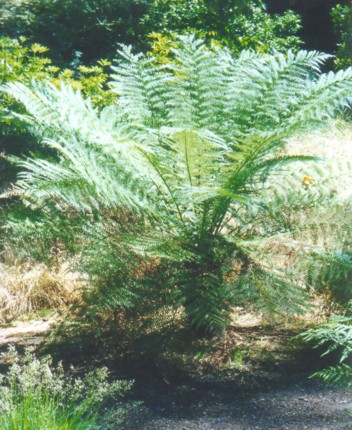
A nice specimen of Dicksonia antarctica growing permanently outdoors in Victoria, British Columbia. Photo by the author.
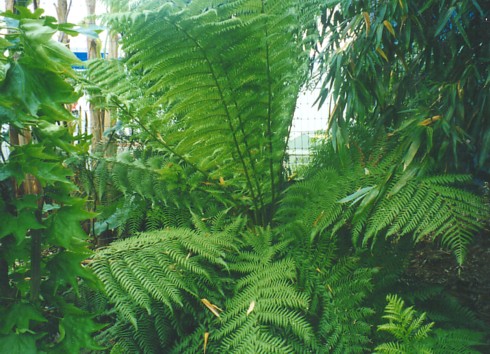
Dicksonia antarctica at Jungle Fever Exotics in Tacoma, Washington. Although it is not visible, this plant has formed a foot or two of trunk. Photo by the author. This specimen perished in the freeze of December 1998.
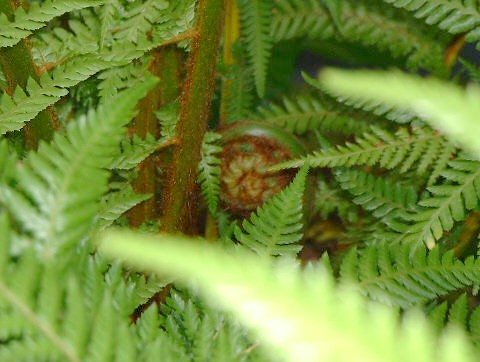
Uncurling crozier of Dicksonia antarctica, photographed in May in my Olympia garden. Photo by the author.

Uncurling frond on Dicksonia antarctica in my garden in Olympia, Washington. Photo by the author.
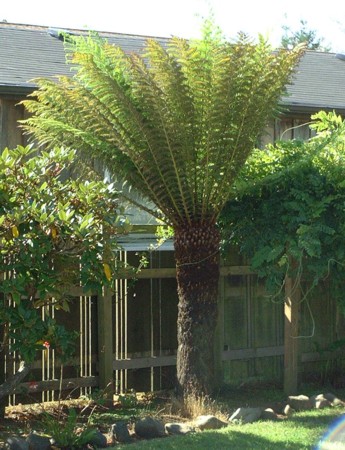
A large Dicksonia antarctica in Bandon, Oregon, a climate cool enough for it to thrive in the sun. Photo by the author.
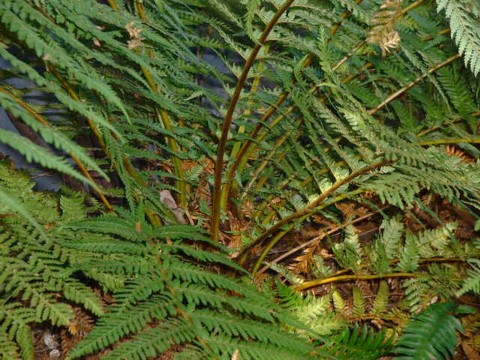
Stipes and fronds of Dicksonia antarctica in my garden. Photo by the author.
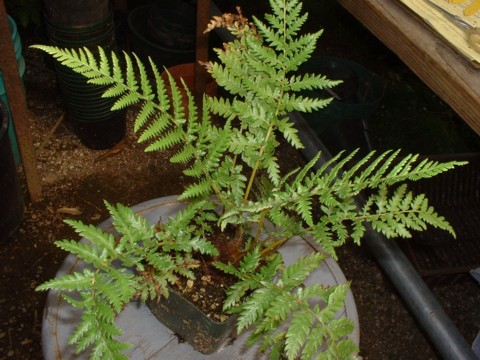
Sporeling of Dicksonia antarctica at Fancy Fronds Nursery, Gold Bar, WA. Photo by the author.
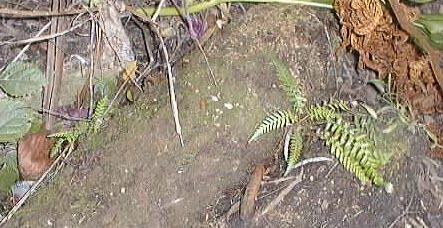
Small sporelings of Dicksonia antarctica growing up amongst fallen treefern trunks, demonstrating how readily this species perpetuates itself. Photo courtesy of Scott Ridges.

Developing unripe sori of Dicksonia antarctica, Fancy Fronds Nursery, Gold Bar, WA. Photo by the author.
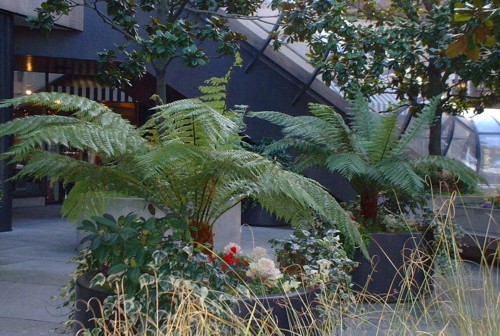
Dicksonia antarctica with Magnolia grandiflora in Downtown Seattle, WA. Photo by the author.
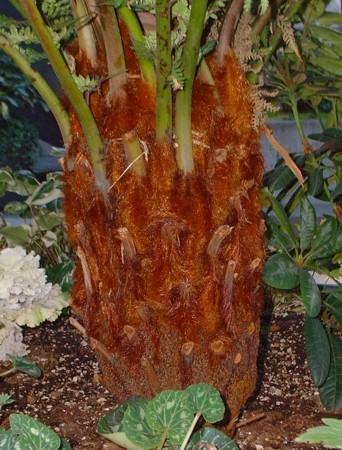
Close-up of the fuzzy red-brown trunk and lower stipes of Dicksonia antarctica. Photo by the author.
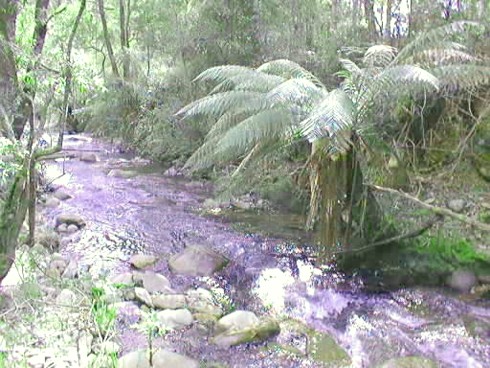
Dicksonia antarctica near Harrietville, Victoria, Australia. Photo courtesy of Scott Ridges.
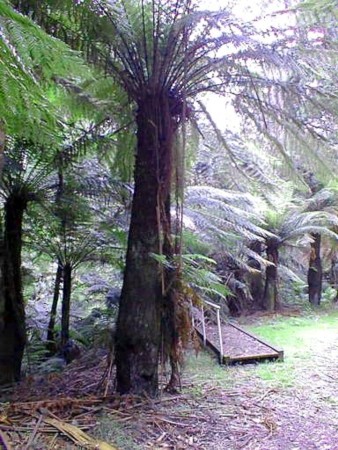
Dicksonia antarctica in habitat, Victoria, Australia. The old fronds often fold down and hang over the trunk, which helps protect it from dessication. Photo courtesy of Scott Ridges.
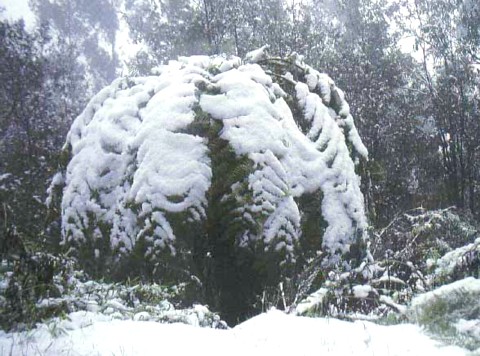
Dicksonia antarctica covered in snow. (I don't know where I got this photo - if it is yours and you would like credit for it or would like it removed, please let me know.)
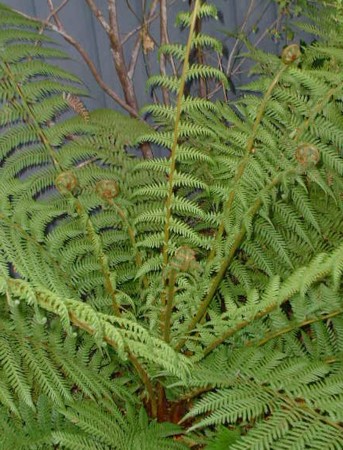
Dicksonia antarctica in my garden in spring, with a flush of new croziers uncurling. Photo by the author.
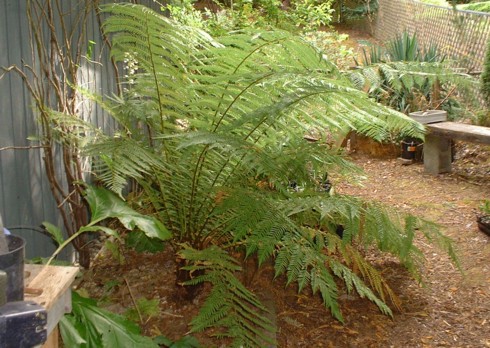
Dicksonia antarctica in my garden in August. This plant has now developed about a foot of trunk. Photo by the author.
Cyathea woolsiana (previous)
Dicksonia fibrosa (next)
back to Dicksonia